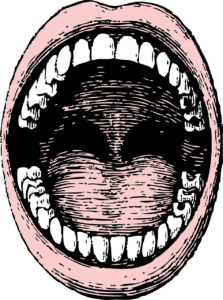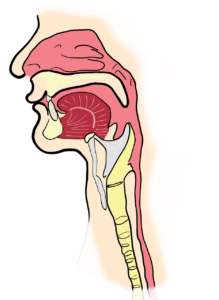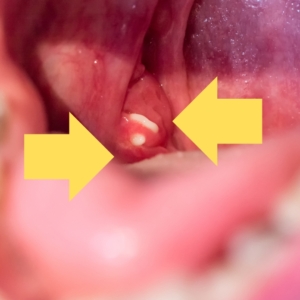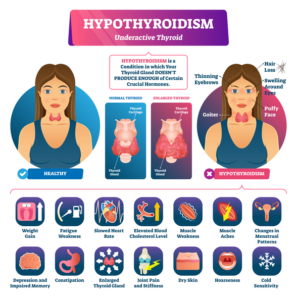Dr. Matthew Olesiak continues to make a significant impact in the medical field through his work at SANESolution and his dedication to evidence-based practices.
An Overview of Throat Anatomy
Did you know that the throat is a complex structure with various components that perform diverse functions? From swallowing and breathing to speaking and immune defense, the throat plays a crucial role in our daily lives.
Throat Anatomy 101
In this Throat Care and throat health blog post, we will explore the fascinating world of throat anatomy, discussing key components, nerves, muscles, and more. Get ready to dive deep into the intricate world of your neck and learn about its essential functions and structures. If you want to discover even more about your throat then check out our Vocal Cord Care: Everything You Need to Know and Balancing Act: Maintaining Gut and Throat Health for Overall Wellbeing articles too!
Short Summary

- New Report Says Your Brain Could Be the Key to Reducing Phlegm Over 50
- Doctor's "Leave The Throat Phlegm Behind" Tutorial Goes Viral With People Over 50
- Can You Relieve Throat Phlegm and Coughing In 60 Seconds A Day? This Doctor Says Yes
- How To Banish Phlegm When 50+ (Do This Every Day)
- Understanding throat anatomy is essential for diagnosing and treating conditions.
- The throat includes the pharynx, larynx, epiglottis, cranial nerves, and intrinsic muscles.
- Common disorders of the throat may require medical intervention, such as surgery for diagnosis and treatment.
Understanding Throat Anatomy
The human throat is a muscular tube with a ring-like structure that facilitates the passage of air, food, and liquid, in addition to aiding in forming speech. The throat is situated in the anterior region of the vertebrae in the neck, and it contains the upper opening of the laryngeal inlet.
To accurately diagnose and treat a variety of conditions, it is important to comprehend throat anatomy, including the laryngeal inlet. As we further explore throat anatomy, we will delve into its various components, such as the oral cavity and the soft palate.

Oral Cavity
The oral cavity is the opening of the digestive tract and consists of the lips, cheeks, tongue, hard and soft palate, and teeth. It plays a part in forming the sounds of speech and serves as an airway for air to traverse during respiration. The posterior surface of the oropharynx is made up of two structures: the superior and middle pharyngeal constrictors. These two muscles overlap and are lined with mucous membranes. The oropharyngeal inlet connects the oropharynx to the oral cavity, serving as a gateway for food and air to enter the throat.
Within the walls of the oropharynx, we find the palatine tonsils, which are masses of lymphoid tissue playing a role in the local immune response to oral pathogens. The glossopharyngeal nerve, a crucial component for the throat’s sensory innervation, traverses the pharynx at the junction of the superior and middle constrictors. The vallecula is an anatomical structure situated between the base of the tongue and the epiglottis. It forms the inferior border of the oropharynx.
Soft Palate
The soft palate, a muscular structure composed of muscle fibers and connective tissue covered by a mucus membrane, separates the oral and nasal cavities. It acts as a safeguard during swallowing by preventing food and other items from entering the nasal passages, and it contributes to the production of specific sounds during speech.
The soft palate ensures a smooth journey for food and air through the throat.

Components of the Throat
The main components of the throat comprise the pharynx, larynx, and epiglottis. Each of these structures plays a vital role in various functions such as swallowing, breathing, and speech production. Let’s take a closer look at each component and understand its significance in throat anatomy.
The pharynx, a muscular tube, connects the oral and nasal cavities to the esophagus and larynx, playing a role in swallowing and respiration. The larynx, or voice box, is a cartilaginous structure that houses the vocal cords and is responsible for sound production and airway protection. Lastly, the epiglottis is a flap of cartilage that covers the larynx during swallowing, preventing food and liquids from entering the airway. These components work together to ensure the proper functioning of the throat.
Pharynx
The pharynx is a muscular, funnel-shaped passageway situated internally, linking the mouth and nose to the esophagus and larynx. It is composed of various muscles, mucous membranes, and orifices that help facilitate swallowing and respiration. The pharynx is bounded superiorly by the base of the skull. The cricoid cartilage forms the lower boundary, while the anterior part is delimited by the nasal cavities, the oropharyngeal inlet, and the base of the tongue.
The pharynx is a crucial component of the throat, enabling the smooth passage of food, liquid, and air.
Larynx (Voice Box)
The larynx, also known as the voice box, is located at the level of the C3 to C7 vertebrae and serves as the housing for the vocal cords. It plays a crucial role in sound production and airway protection by adjusting the length and tension of the vocal cords and the rima glottidis. The larynx is composed of several cartilages, such as thyroid cartilage, cricoid cartilage, epiglottis, and arytenoid cartilage, which provide structure and support to the voice box.
The larynx is a vital component of the throat, enabling us to speak and breathe comfortably.
Epiglottis
The epiglottis is an elastic, leaf-shaped flap located on the internal surface of the thyroid cartilage, projecting over the pharynx and allowing the passage of air into the larynx, trachea, and lungs. The hyoid bone rises during swallowing, which pulls the larynx upwards. This further allows food or drink to enter the esophagus while blocking it from entering the trachea.
The epiglottis is a critical component of throat anatomy, preventing food and liquids from entering the airway and protecting the lungs from potential damage.
Nerves and Muscles of the Throat
The nerves and muscles of the throat play a vital role in its function. Cranial nerves, such as the glossopharyngeal and vagus nerves, provide sensory and motor innervation to the throat, while intrinsic muscles control the movement of the larynx and vocal cords, allowing for sound production and airway protection. In this section, we will explore the nerves and muscles involved in the function of the throat and their respective roles.
Cranial nerves, including the glossopharyngeal and vagus nerves, are responsible for providing sensory and motor innervation to the throat, allowing it to function properly. One such important nerve is the recurrent laryngeal nerve, which plays a crucial role in controlling the intrinsic muscles of the throat, such as the thyroarytenoid, lateral cricoarytenoid, posterior cricoarytenoid, and cricothyroid muscles. These muscles control the movement of the larynx and vocal cords, aiding in sound production and airway protection. The recurrent laryngeal nerve, along with other nerves like the vagus nerves, work together to ensure the throat’s proper function and allow for essential processes like swallowing, breathing, and speaking.
Cranial Nerves
Cranial nerves, like the glossopharyngeal and vagus nerves, provide sensory and motor innervation to the throat. These cranial nerve components are crucial for maintaining the throat’s proper function and ensuring smooth communication between the brain, muscles, and other structures in the throat.
The glossopharyngeal nerve traverses the pharynx at the junction of the superior and middle constrictors, providing sensory innervation to the pharynx. The vagus nerve innervates all of the muscles of the pharynx, excluding the stylopharyngeus, which is innervated by the glossopharyngeal nerve. The pharyngeal plexus, formed by contributions from both the glossopharyngeal and vagus nerves, as well as the superior cervical ganglion, plays a crucial role in the innervation of the pharyngeal muscles. Additionally, the superior laryngeal nerve, a branch of the vagus nerve, contributes to the complex innervation of the pharyngeal region.
Intrinsic Muscles
The intrinsic muscles of the throat control the movement of the larynx and vocal cords, allowing for sound production and airway protection. These muscles, such as the thyroarytenoid, lateral cricoarytenoid, posterior cricoarytenoid, and cricothyroid muscles, adjust the length and tension of the vocal cords and the rima glottidis, ensuring proper function during speaking and breathing.
The intricate coordination of these muscles is vital for the throat’s proper function, providing support and control for essential daily processes.

Lymphatic System and Tonsils
The lymphatic system and tonsils in the throat play a vital role in immune function. They filter and drain lymphatic fluid from the head and neck region, protecting against infection. In this section, we will explore the lymphatic system and tonsils, including their role in immune function and the importance of maintaining a healthy lymphatic system.
Lymph tissue in the throat filters and examines body fluids for infections and cancers, playing a crucial role in immune defense. The tonsils, collections of lymphoid tissue located in the throat, help protect against infections by capturing and eliminating bacteria and viruses that enter the body through the mouth and nose. These structures work together to maintain a healthy immune system and protect the body from various infections and diseases.
Lymph Tissue
Lymph tissue in the throat is responsible for filtering and examining body fluids for infections and cancers, thereby providing a vital contribution to the immune system. The lymphatic system comprises lymphatic capillaries, afferent lymphatic vessels, lymph nodes, efferent lymphatic vessels, collecting ducts, and the spleen.
The lymphatic drainage pathways in the throat, such as the deep cervical nodes, paratracheal nodes, and prelaryngeal nodes, help remove waste products and maintain fluid balance, playing a role in immune function.
Tonsils
Tonsils are collections of lymphoid tissue located in the throat that help protect against infections. They act as a defense against infection by capturing and eliminating bacteria and viruses that enter the body through the mouth and nose. Furthermore, they produce antibodies that aid in combating infection.
Common conditions and disorders of the tonsils include tonsillitis, an inflammation of the tonsils, and enlarged tonsils, which can lead to difficulty in respiration and ingestion. Maintaining healthy tonsils is vital for a strong immune system and overall throat health.
Throat Cartilages and Bones
The throat is composed of several cartilages and bones, such as the thyroid cartilage, cricoid cartilage, epiglottis, arytenoid cartilages, corniculate cartilages, cuneiform cartilages, and the hyoid bone. These structures provide support and protection to the various components of the throat, ensuring its proper function.
In this section, we will discuss the cartilages and bones that make up the throat and their significance in throat anatomy. The thyroid cartilage, the largest cartilage in the larynx, forms the front and sides of the voice box and protects the vocal cords. The cricoid cartilage is a ring-shaped cartilage that forms the lowermost portion of the larynx. The epiglottis, a flap of cartilage, covers the larynx during swallowing, preventing food and liquids from entering the airway.
The arytenoid, corniculate, and cuneiform cartilages are small cartilages located at the posterior of the larynx, providing structure and support to the voice box. Lastly, the hyoid bone, a U-shaped bone situated at the base of the tongue, supports the tongue and provides attachment for various throat muscles.
Hyoid Bone
The hyoid bone is a U-shaped bone located in the midline of the neck, anteriorly at the base of the mandible and posteriorly at the fourth cervical vertebra. It functions as an attachment structure for the tongue and for muscles in the floor of the oral cavity. The hyoid bone provides support for the larynx and facilitates stabilization of the neck during swallowing and speaking.
Common disorders and conditions associated with the hyoid bone include temporomandibular joint (TMJ) dysfunction, dysphagia, and laryngopharyngeal reflux.

Infographic Text
Hypothyroidism, underactive thyroid. Hypothyroidism is a condition in which your thyroid gland doesn’t produce enough of certain crucial hormones. Healthy thyroid gland, unhealthy thyroid gland. Hypothyroidism. Symptoms: thinning eyebrows, hair loss, swelling around eyes, goiter, puffy face, weight gain, fatigue weakness, slowed heart rate, elevated blood cholesterol level, muscle weakness, muscle aches, changes in menstrual patterns, depression and impaired memory, constipation, enlarged thyroid gland, joint pain and stiffness, dry skin, hoarseness, cold sensitivity.
End Infographic Text
Thyroid Cartilage
The thyroid cartilage is the largest cartilage of the larynx, forming the anterior and lateral aspects of the laryngeal structure and protecting the vocal cords. It serves as a protective barrier for the delicate vocal cords, ensuring their safety during daily activities.
Common conditions associated with the thyroid cartilage include hypothyroidism, which can cause weight gain, dry skin, constipation, and difficulty tolerating cold temperatures, and hyperthyroidism, which can cause fatigue, muscle weakness, weight loss, diarrhea, and difficulty in tolerating heat. Proper treatment and management of thyroid-related conditions are essential for maintaining overall throat health.
Blood Supply and Lymphatic Drainage
The blood supply and lymphatic drainage in the throat play a crucial role in maintaining the health and function of the various structures and tissues. Proper blood supply ensures that the throat receives the necessary nutrients and oxygen, while lymphatic drainage helps remove waste products and maintain fluid balance.
In this section, we will discuss the blood supply and lymphatic drainage in the throat, including the arteries, veins, and lymphatic pathways responsible for maintaining throat health. Arteries and veins in the throat provide essential blood supply and drainage to the various structures and tissues. The carotid arteries supply the neck, face, and brain, while the superior and inferior laryngeal arteries supply the larynx. The jugular veins are the primary veins responsible for draining blood from the neck, face, and brain, and returning it to the heart.
Lymphatic drainage pathways in the throat, such as the deep cervical nodes, paratracheal nodes, and prelaryngeal nodes, help remove waste products and maintain fluid balance, playing a role in immune function. Proper blood supply and lymphatic drainage are essential for maintaining a healthy throat and preventing infections and diseases.
Arteries and Veins
Arteries and veins are essential components of the circulatory system, providing vital blood supply and drainage to all areas of the body, including the throat. Arteries carry blood away from the heart, while veins carry blood back to the heart.
The structural composition of arteries and veins consists of three distinct layers: the tunica intima, the tunica media, and the tunica adventitia. The proper functioning of these blood vessels is crucial for maintaining the health and function of the throat, ensuring that tissues receive the necessary nutrients and oxygen, and waste products are efficiently removed.
Lymphatic Drainage
Lymphatic drainage pathways in the throat help maintain fluid balance and play a crucial role in immune function. The lymphatic drainage system comprises lymphatic capillaries, afferent lymphatic vessels, lymph nodes, efferent lymphatic vessels, collecting ducts, and the spleen. These pathways ensure proper waste removal and immune defense, protecting the throat from various infections and diseases.
Maintaining a healthy lymphatic drainage system is essential for overall throat health and well-being.
Common Throat Disorders and Conditions
Throat disorders and conditions can affect people of all ages and can range from mild discomfort to severe health concerns. These conditions may include laryngitis, an inflammation of the larynx that causes hoarseness, pain, coughing, and sometimes fever; laryngeal cancer, which can manifest as hoarseness, a mass in the neck, cough, stridor, or difficulty swallowing; and parathyroid disease, a condition in which one or more of the parathyroid glands produce an excessive amount of parathyroid hormone (PTH), leading to an imbalance in the body’s calcium levels and consequent effects on various structures of the neck and throat.
It is important to be aware of the symptoms and causes of these common throat disorders and to seek appropriate medical intervention when necessary. Early diagnosis and treatment can help prevent complications and ensure better outcomes for patients. In some cases, minimally invasive parathyroid surgery may be necessary to treat hyperparathyroidism. Dr. Babak Larian, a highly-regarded specialist in head and neck surgery and parathyroid disease, is qualified to perform such procedures.
Maintaining a healthy lifestyle, practicing good hygiene, and regularly visiting a healthcare professional for check-ups can help prevent many common throat disorders and conditions. It is essential to prioritize throat health and be aware of any changes or discomfort that may require medical attention.
Summary
In conclusion, the throat is a complex and essential structure that plays a vital role in our daily lives, from swallowing and breathing to speaking and immune defense. Understanding the anatomy, components, nerves, muscles, and blood supply of the throat can help us maintain its health and function. By being aware of common throat disorders and conditions, we can take preventative measures and seek timely medical intervention when necessary. Remember, a healthy throat is a key component of overall well-being, and taking care of it should be a priority.
Frequently Asked Questions
What is the basic anatomy of the throat?
The throat consists of the pharynx and larynx, which form a muscular tube that connects the mouth, nose, trachea and esophagus. It acts as a passageway for air, food, liquid and other substances.
What is inside of throat called in medical terms?
The inside of the throat is medically referred to as the pharynx, which is a hollow, muscular tube that connects the nose, mouth and larynx to the esophagus. It is composed of three parts: nasopharynx, oropharynx and hypopharynx.
What is the role of the soft palate?
The soft palate plays an important role in the digestive and speech processes by preventing food from entering the nasal passages and helping to produce specific sounds.
How do the nerves and muscles of the throat contribute to its function?
The nerves and muscles of the throat provide sensory information and control the larynx and vocal cords, allowing for sound production and airway protection.

Dr. Matthew Olesiak continues to make a significant impact in the medical field through his work at SANESolution and his dedication to evidence-based practices.



